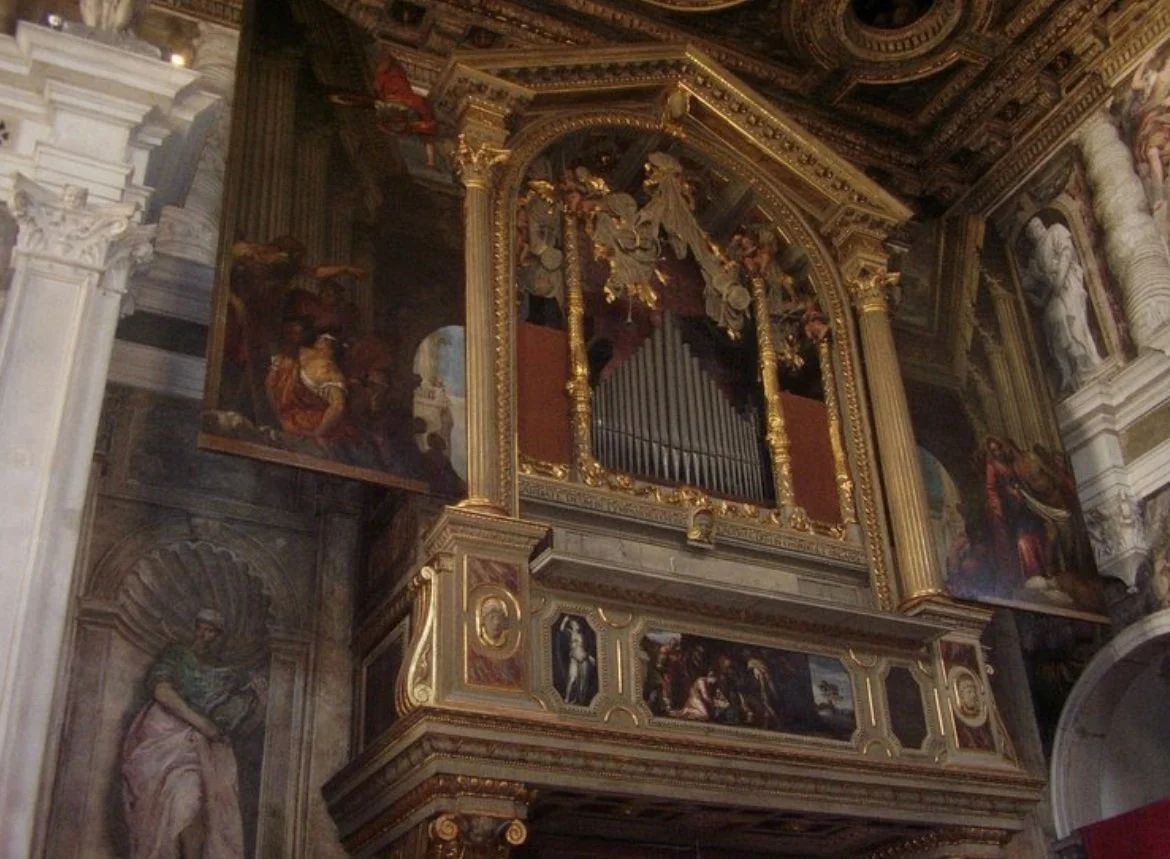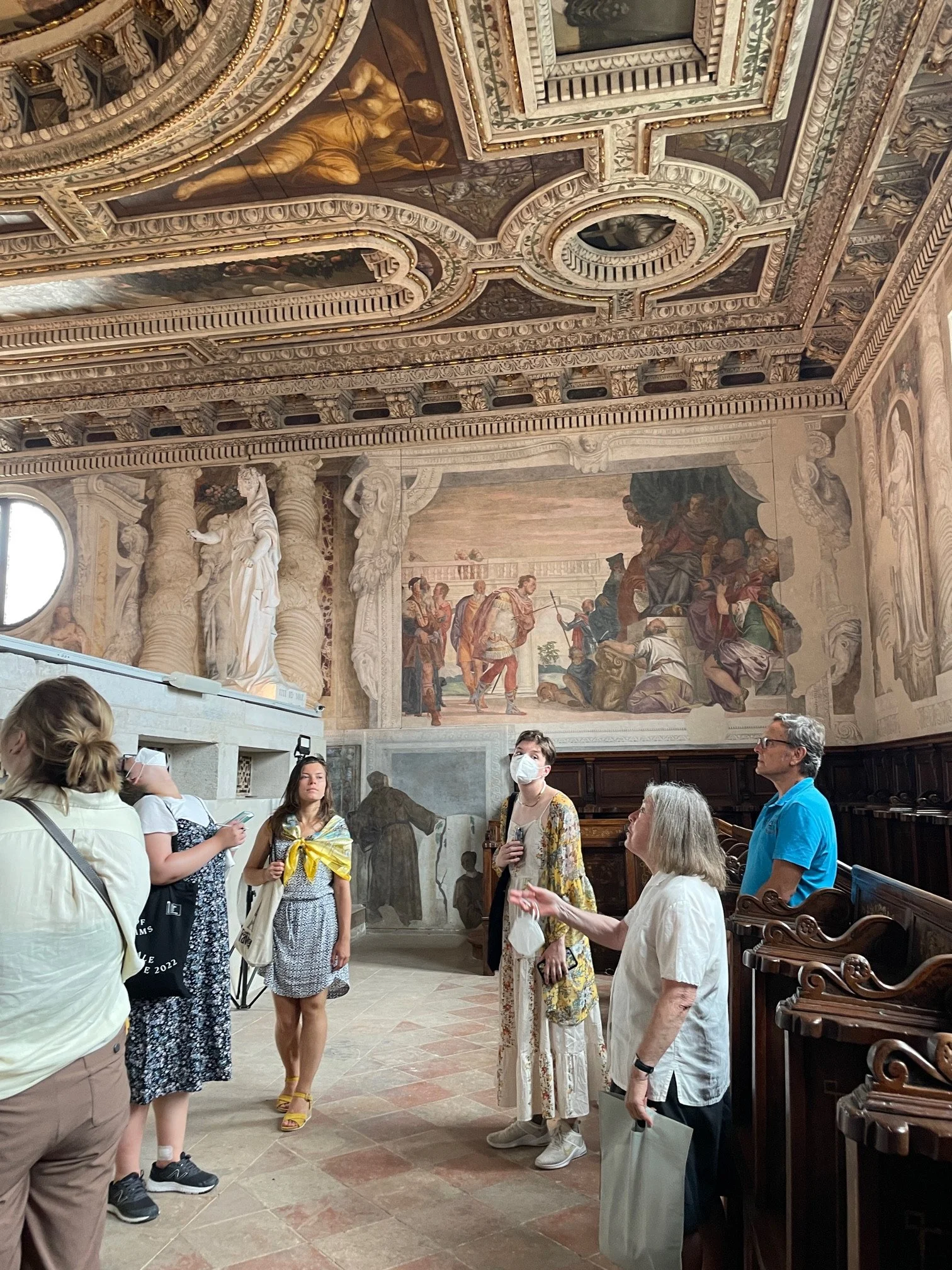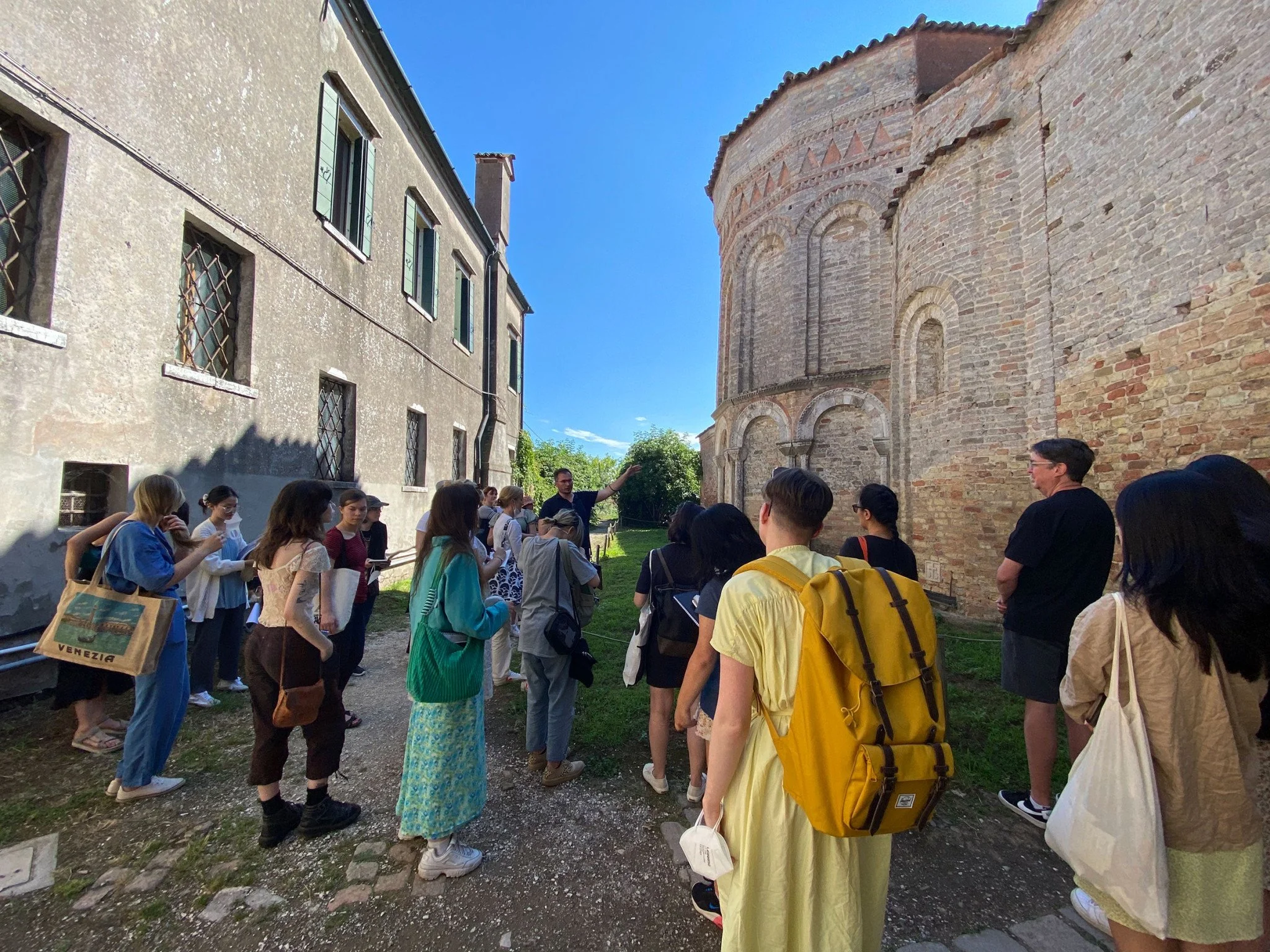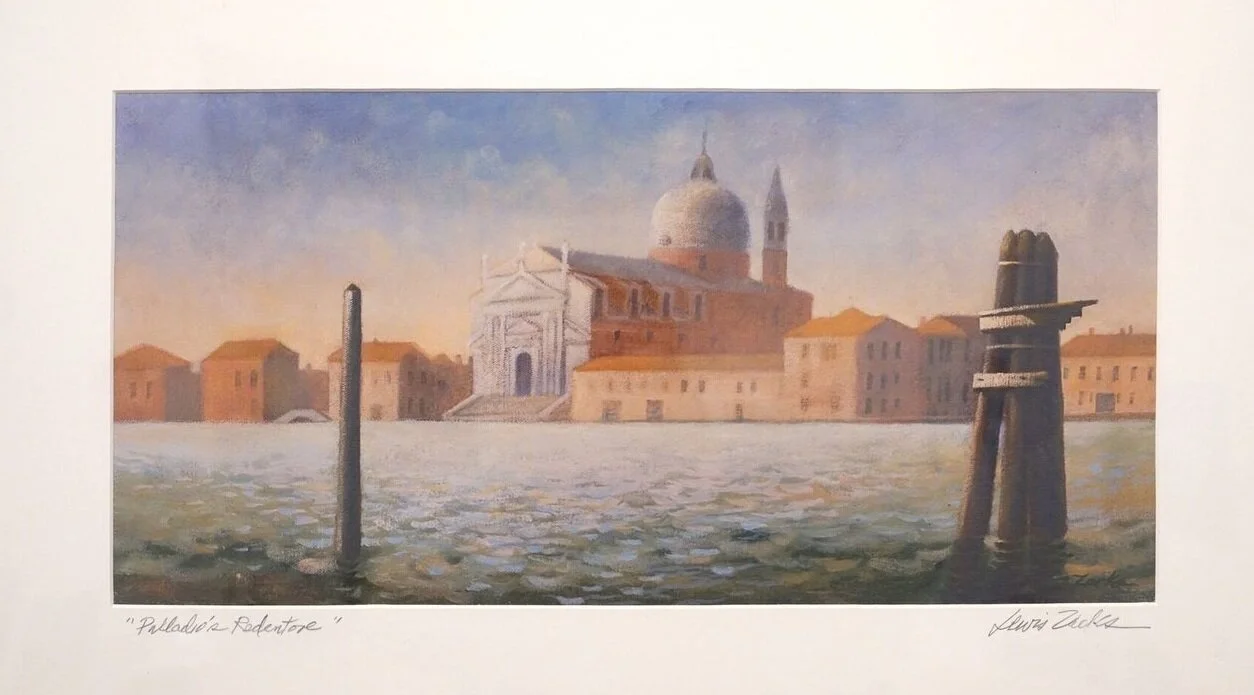Of course I was impressed, if not overstimulated, to draw and paint the City of Water, but more importantly, my understanding of art history as been completely revolutionized.
Pratt in Venice 2011
Christina Manzella, Graduate Art History & Library Science Student
I knew from before I was accepted into Pratt that I wanted to participate in the Pratt in Venice program. First, it’s always better to experience art in situ. I’m a contemporary art person, which was a major factor in my choosing a school in NYC to study art history. Why wouldn’t I want to go to Europe to study Renaissance and Baroque art? Second, I’m a contemporary art person, so that Renaissance/Baroque distribution requirement was a bit daunting. I knew that fulfilling that class in Venice would be more fun. What I found out was that going to Pratt in Venice was also the best way for me to actually learn about that portion of art’s history. Taking the two art history courses offered meant a minimal amount of time in the classroom. The majority of our class meetings were field trips, and, when we were in the classroom, we had quite a few guest lecturers. This ‘hands-on’ approach was so engaging and ideal for learning about an area in which I thought I had little interest. Thanks to the program, I also learned that I’m really interested in architecture.
The benefits of participating in one of Pratt’s most established study abroad programs were evident in the art history classes. The benefits of going to a city with faculty who have been year after year became evident in our group outings and free time. Thanks to them, we found out which islands to visit, which areas to go shopping, and at which restaurants to eat. And, though I won’t divulge any of the surprises, there are some amazing group events. Finally, the Festa Redentore is not to be missed. It’s one of the best reasons to go to Venice during July. Do not miss this night!
Director's Report, 2011
Diana Gisolfi, Director
2011 was a special year for Pratt in Venice. The group of participants comprised 21 students, balanced equally between graduate and undergraduate, including degree candidates in painting, printmaking, art history, library science, illustration, art direction, and various combined degrees.
Pratt in Venice 2011 on Palladio's bridge, Bassano del Grappa.
The printmaking studio at the Scuola di Grafica was active overtime with highly determined printmakers tirelessly guided by Jennifer Melby. Chris Wright and his painters labored outdoors and in the Universita` dell’Arte studio, producing a wide range of responses to the experience. Art history students tromped and floated around the city studying the visual arts in situ with Dimitri Hazzikostas, while in Materials and Techniques students were admitted, through the help of Diana Gisolfi’s Venetian associates, to conservation laboratories and sites to learn about ways of making and salvaging art. Visiting lecturers included Tracy Cooper on Palladio, Paolo Spezzani on non-destructive analysis of art works, Robert Morgan’s view of the Biennale, and Stefania Sartori on wood conservation.
In addition to our traditional visits to Padua and to Castelfranco/Maser/Bassano, including architect Antonio Stevan’s lecture at the Giotto Chapel and an outdoor feast at Bassano, there were two unique happenings. The publicity office at Pratt contacted the program to ask if CBS could film some of our students viewing the Biennale. As Hilary Thompson, our wonderfully organized on-site assistant, had already organized the visit to the Giardini part of the Biennale, we set up a visit to the Arsenale part, with CBS in tow. Some segment of the filming should appear on CBS Sunday Morning very soon! The other unique event was in relation to conservation of the church of San Sebastiano, decorated by Paolo Veronese. Materials and Techniques students visited the exhibition of the three ceiling canvases, just cleaned, at the Palazzo Grimani, and they later were able to mount the scaffold in the church with the superintendent of the project, Dr. Amalia Basso as guide, to see up close all the varied painting techniques used by Veronese and his helpers.
Our Pratt in Venice exhibition on campus October 17-22 in the Second Floor Gallery reflects the richness of the program in the range and high quality of work exhibited. The conservation research and on-site photographs shown in the display cases outside the gallery remain on view throughout the year.
Prof. Gisolfi Writes for Veronese Exhibition Catalogue
Professor Diana Gisolfi’s essay, “Veronese’s Unity of Vision in the Story of Esther,” was recently published in the exhibition catalogue Veronese: The Stories of Esther Revealed, at the Museo di Palazzo Grimani in Venice, Italy.
Paolo Veronese, The Crowning of Esther
The exhibition ran from April 21st–July 24th, 2011. It featured three different newly-restored Paolo Veronese masterpieces from the church of San Sebastiano depicting scenes from the Book of Esther in the Old Testament.
Director's Report, 2009
Diana Gisolfi, Program Director
Pratt in Venice 2009 marked the 25th anniversary of our Program. Fittingly it was a stellar year. Twenty-four participants included nine graduate students, from Art History and also Fine Arts and Digital Arts. The undergraduates were majors in Fine Arts, Communication Design, many also completing minors in Art History, and majors in Art History. Graduate TCHADA alumna Gillian Sneed (MS '08) served as on-site assistant and supervised housing matters. She also organized and led a visit of all interested students to the Venice Biennale.
The climate cooperated, so Dimitri Hazzikostas’ Torcello trip started the program off beautifully. Greg Drasler, painting professor and Joe Stauber, printmaking professor, both in their second year with the program, worked wonderfully together and supported and pushed students well. The final crit, and the exhibition in October at Pratt, showed a great range of excellent work in both painting and printmaking/drawing.
Graduate assistants in the art history classes, Hilary Thompson and John Gribowich, undertook helping undergraduates in the intricacies of using the Marciana Library and the Quirini-Stampalia Library. And the nine students in Materials and Techniques came through with excellent research, with topics ranging from Venetian bricks, to early printed books and manuscripts, to meaning and technique in mosaics, to pigments and underdrawings in Bellini and Tintoretto, to sustaining Venice’s ecosystem.
We again enjoyed collaboration from local experts: Antonio Stevan at the Giotto chapel, Stefania Sartori in the wood sculpture conservation lab, Maestro Piero in the mosaic lab, Bernardo Molinas on frescoes, Paolo Spezzani on techniques for showing painting processes.
And we all enjoyed the spectacular fireworks on the Feast on the Redentore.
Painter Reflects on Time in Venice
Reflections on Venice 2009
Pratt in Venice Program Celebrates Its 24th Year
Diana Gisolfi, Director
The Pratt in Venice summer program of 2008 enjoyed several novelties. The printmaking course, developed and taught for years by Clare Romano and John Ross, was turned over to Joe Stauber, now printmaking professor at Pratt and once a student of Romano. Romano and Ross met with Stauber in the spring and the transition was seamless. Greg Drasler taught painting in Venice for the first time. This team received much praise from participants and will carry on in 2009.
The student participants included outside students, graduate students in the MFA and HA masters programs, undergraduates from various studio departments and a strong group of undergraduate BFAs in Art History.
Although it rained for the first few days and the Torcello trip was postponed twice, Dimitri Hazzikostas finally had a fine day to introduce the group to Venetian history and early buildings with splendid mosaics at Torcello. Professor Fiorentin and Massimo Angeletti at the Università Internazionale dell’Arte provided their traditional hospitality and also the new convenience of wireless internet (which worked most of the time) and two computers available to participants. Our in-house library at UIA received some additions, sadly due to a sale at our favorite bookstore, Libreria Sansovino, which was giving up its status as an art bookstore. The libraries at the Cini Foundation, the Marciana (up and running after renovations in 2007), and the Querini-Stampalia were kept busy by our students and the painting studios were fully occupied and open regularly on Saturday. Printmaking at the Scula Internazionale di Grafica took advantage of some full day sessions and the production was impressive.
In our traditional visit to Padua, Architetto Antonio Stevan was again our generous host and expert lecturer on the conservation of the Giotto Chapel. On the trip to the Villa Barbaro at Maser and Bassano Joe Stauber organized a relay race to wake the group up for drawing in plein air after the abundant pranzo and Greg Drasler conducted individual crits. Special lectures included Professor Botter on fresco conservation, Paolo Spezzani on infra-red imaging, X-rays and ultraviolet images in Venetian painting, and Robert Morgan on global art today. In addition to our visits to laboratories such as the mosaic studio in San Marco, Materials and Techniques had a private visit to exhibition concerning the restoration and to the top of the Clock Tower in San Marco, where the bronze Moors again ring the bell and the clockworks again function.







